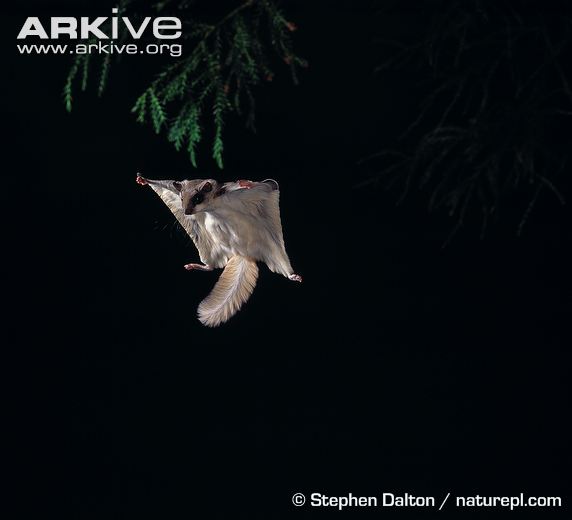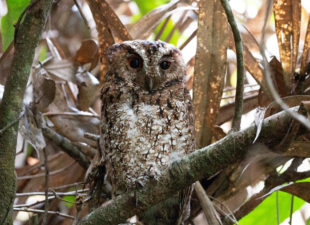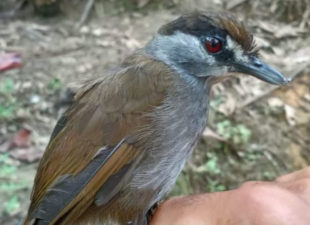Say the word “squirrel” and everyone pictures nearly the same thing: bushy tail, buckteeth, ornery personality, and a propensity for burgling their way into people’s birdfeeders.
However, there’s another type of squirrel; a more exotic, arguably cooler cousin that lurks like ninjas in the night: the flying squirrels. Nocturnal, big-eyed, and tuft-eared, flying squirrels live throughout the world, including in the eastern United States and the northwest coast.
Their nocturnal habits make them more difficult to spot than a common squirrel, which can make their conservation particularly difficult the world over.
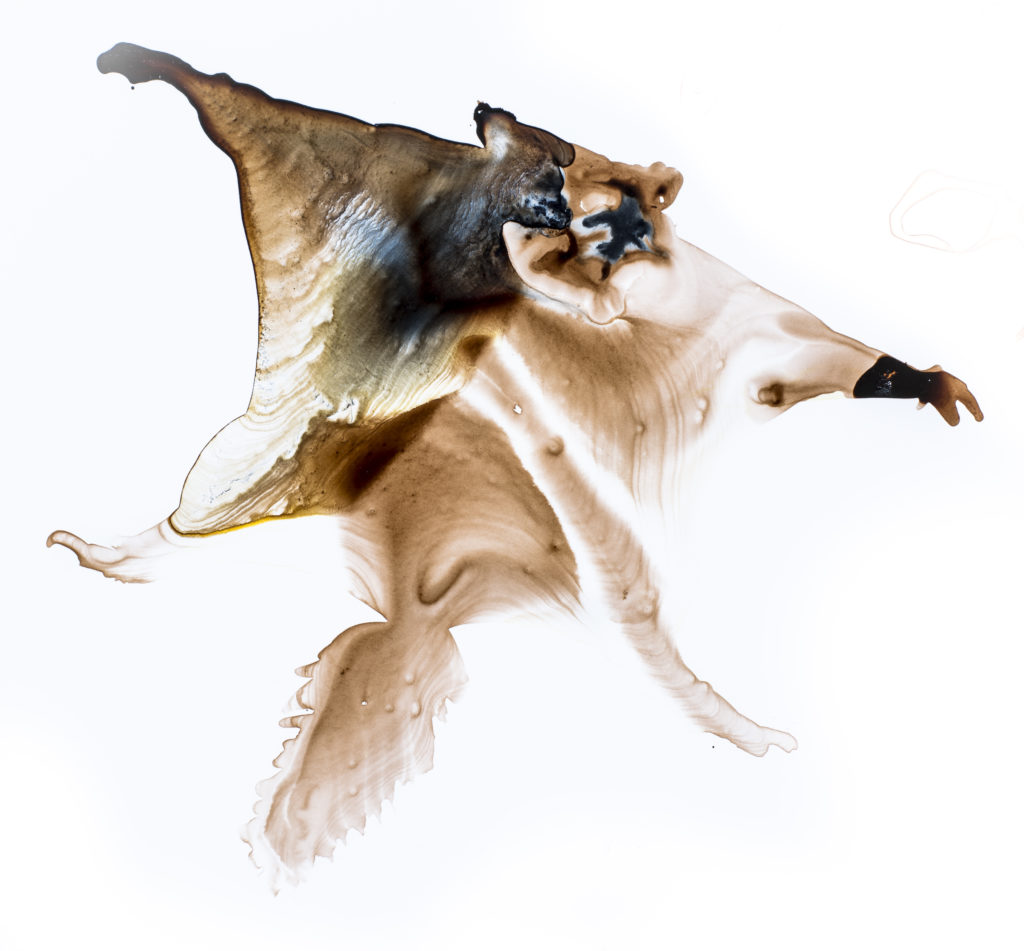
Artwork by Alexis Rockman.
In India there is a kind of flying squirrel known only from a lone squirrel collected in the Namdapha National Park in the Eastern Himalayas. One of our top 25 most wanted lost species, it hasn’t been seen for 37 years, since 1981 (the year Ronald Reagan was sworn in as U.S. president and that Soft Cell’s Tainted Love was top of the charts in the UK).
Although little is known about the species, like all of its other tree-borne brethren, the Namdapha Flying Squirrel undoubtedly possesses stunning abilities and fascinating habits. Here are some of the coolest things about flying squirrels.
Much like Buzz Lightyear, flying squirrels don’t actually fly; they “glide” or fall with style. Flying squirrels have membranes of fur between their arms and legs, called “patagia.” The patagia act as parachutes to slow them in leaps between trees. Human BASE jumpers mimic this technique.
They can leap many times their own body length, and can have precision control of their landings. “Flights” (which are really glides), of nearly 300 feet (91 meters), have been recorded. Flying squirrels can also turn nearly 180 degrees in mid-air. Their limbs, and their flat rudder-like tail, help them steer and control their leaps. They alight exactly like Batman: They reach toward their landing spot with strong, padded feet that land silently, before their front limbs come down to steady the landing.
They fly, and stay up at night, to avoid predators. Flying squirrels use their aerial abilities to evade predators, including arboreal snakes. But their folded patagia prevent them from being as nimble on their feet as non-flying squirrels, which makes them more vulnerable to predators including birds of prey, dogs, and cats. Being active at night helps them hide from those predators. Their enormous eyes help them see in the dark.
They eat a range of foods; not just nuts. Flying squirrels are omnivores and eat a range of food including fungi, nuts, berries, seeds, as well as carrion, eggs, slugs, and small birds.
The Northern and Southern Flying Squirrel species in the United States don’t hibernate, but they do snuggle. Flying squirrels don’t hibernate through the winter, but they do slow down their metabolism to conserve resources. Social creatures, they’ll also curl up in nests with up to 20 other flying squirrels to keep warm, in one massive cuddle of cuteness.
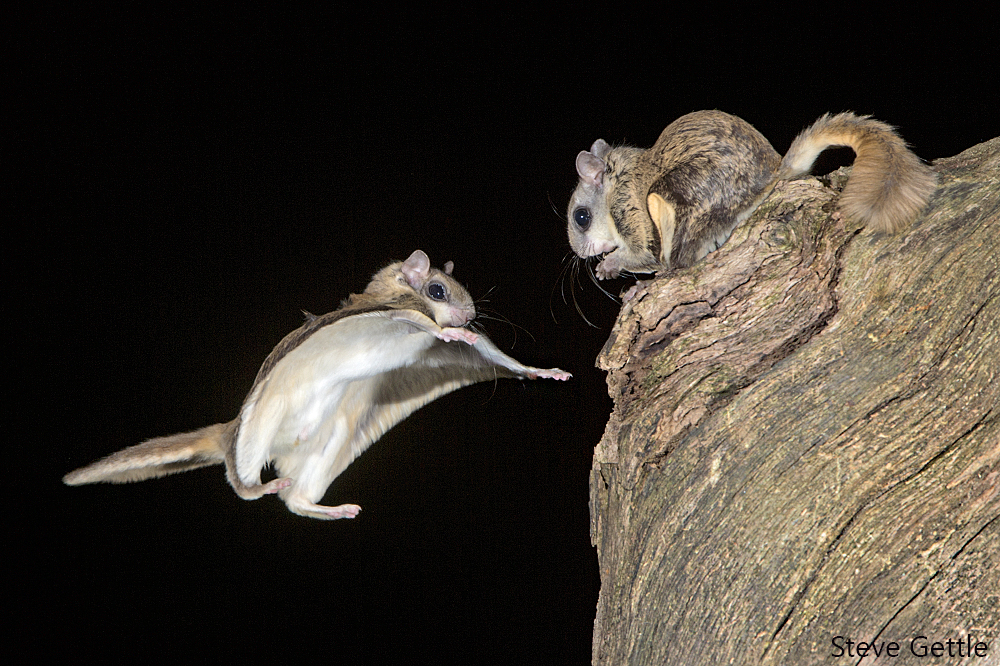
Southern Flying Squirrel. (Photo by Steve Gettle)
They can be huge! Only three species of flying squirrels are native to North America, and they’re pretty tiny—each about 26 centimeters long (10 inches). But 90 percent of all flying squirrel species live in Asia, and some of them are the size of a raccoon! The Laotian Giant Flying Squirrel is more than a meter long (1.08 meters, 42 inches) and weighs 1.8 kilograms (4 pounds).
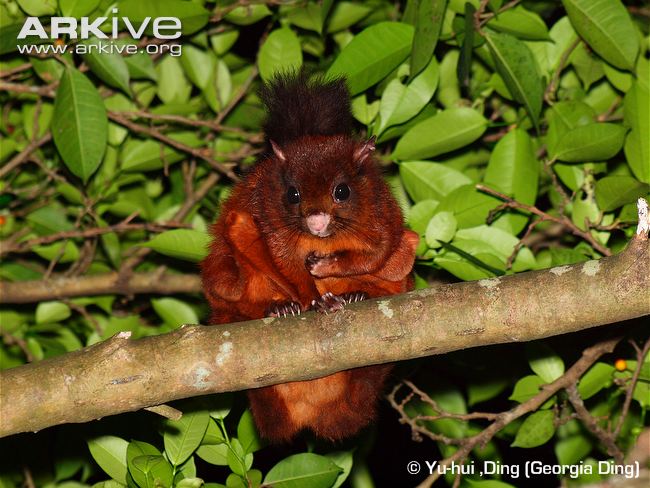
Indian Giant Flying Squirrel.
They’re stealthy, sneaky, and hiding in plain sight. Few people ever see flying squirrels. Their elusive nature also means even scientists can have trouble tracking them. In fact, a new species of American flying squirrel, the Humboldt’s Flying Squirrel, was described in 2017. The Laotian Giant Flying Squirrel was discovered in a bushmeat market in Laos in 2012.
They’re excellent at surprise appearances and disappearances. The Travancore Flying Squirrel of the Western Ghats of India and Sri Lanka was thought to be extinct in the early 1900s, reappeared in the 1960s, then disappeared again for another two decades. The Woolly Flying Squirrel of Pakistan was described in 1924, disappeared until 1994, and seems to have vanished again.
Those feats of disappearance give scientists hope that the Namdapha Flying Squirrel might someday be found again.
(Top photo: Northern Flying Squirrel by Stephen Dalton via Arkive)
